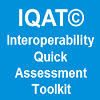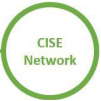Recommendation 17 | Principle 10: Administrative simplification
Simplify processes and use digital channels whenever appropriate for the delivery of European public services, to respond promptly and with high quality to users' requests and reduce the administrative burden on public administrations, businesses and citizens.
Solutions
| List of all available solutions that implement this recommendation |
|---|

|
CIRCABC enables the collaboration, communication and documents exchange between many types of European entities, thus reducing administrative burdens. |

|
The CISE node simplifies access to information relevant for maritime surveillance authorities, hence reducing administrative burden that might be otherwise incurred. |

|
By enabling sharing and reuse of data in real time, Context Broker contributes to the simplification or processes and services received by citizens and businesses, hence reducing administrative burden. |

|
The eArchiving building block can be coupled with services and processes to support administrative burden reduction. |

|
eCertis helps users identify different certificates requested in procurement procedures across the EU. |

|
eDelivery enables and supports secure data exchange among organisations through digital channels. |

|
By allowing the sharing of information across border, eID uses digital channels to simplify the delivery of public services and to reduce administrative burdens. |

|
eInvoicing building block supports organisations to implement electronic eInvoices. This contributes to the simplification of the invoicing cycle by replacing the burdensome paper process with seamless digital Invoices. |

|
By allowing for the use of electronic signatures, eSignature uses digital channels to simplify the delivery of public services and to reduce administrative burdens. |

|
Being the technical representation of the legal European Single Procurement Document, the ESPD Exchange Data Model is simplifying administrative processes by supporting interoperability between ESPD services provided all over Europe. |

Location Framework Blueprint
|
EULF Blueprint Recommendation 6 "Identify where digital government services can be simplified or transformed using location information and location intelligence and implement improvement actions that create value for users" includes recommended steps to simplify and modernise processes and services, thereby reducing administrative burdens. |

|
The IQAT assesses the extent to which the simplification of processes was considered and applied when operating the solution. |

|
LEOS is aimed to simplify the drafting process of legal text. The users don't have to worry about its structure while they are drafting with LEOS. LEOS is providing tools that simplify the review of the texts and the collaboration. |

|
The use of the Re3gistry helps to simplify administrative processes, as it supports organisations in managing and updating reference codes in a consistent way. |

|
When integrated, Ref2link acts as a productivity booster both for content creators and consumers. By promoting the use of reference repositories, it limits the duplication of content. |

|
The use of base registries helps to strengthen efficiency within public administrations by ensuring that all data types are described in a standardised way, can be easily accessible & shared and are requested once-only. |

|
The solution hides the complexity of the national organisation of the administration with a discovery mechanism, hence providing a simplified single access point for any of its users. |
|
IMAPS solution v1.2 |
Question D10 of the Service Delivery section of the IMAPS questionnaire assesses whether the administrative rules and processes underlying a digital public service are transparent to the end-user(s) and explained in a simple and clear way. |
|
OIMAPS solution v1.00 |
Question D4 of the Service Delivery section of the OIMAPS questionnaire assesses organisational behavioural interoperability capabilities that enable the public service delivery to its end users. It examines the level of integration, digitization and automation of the underlying business processes' workflow, as a means to assess how aligned they are and how streamlined the whole public service delivery is. Furthermore, question D9 of the Service Delivery section of the OIMAPS questionnaire assesses to which extent the end user is able to track the progress of the public service delivery. |
|
OpenPM² |
OpenPM² includes a comprehensive set of artefacts/templates that facilitate communication between the project stakeholders, ensure appropriate monitor/control but also assist in reducing the administration overhead of adapting/creating a project management methodology every time a new project starts. At the same time, by incorporating Agile values/principals (by design) PM² allows for tailoring/customization depending on the specific project/organization needs which also impacts favourably the administrative burden involved in managing projects. |






